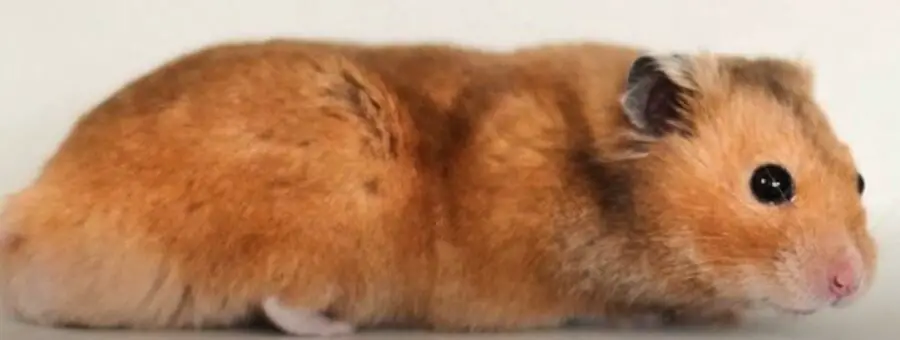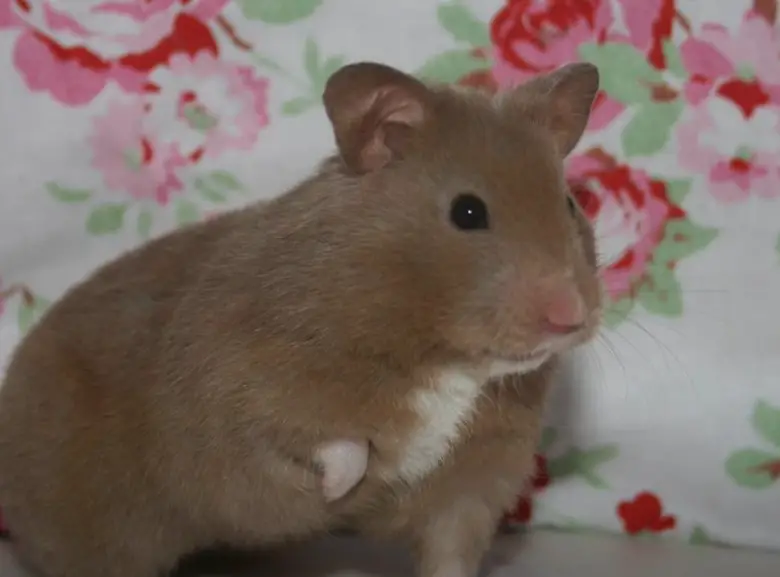Are you wondering if your hamster will change color? What are the reasons behind color changes and is it a sign of stress or illness? In this article, we’ll find out if hamsters change color.
Do Hamsters Change Color? Yes. Hamsters change colors for various reasons including a heavy exposure or lack of light, seasonal changes, illnesses such as wet tail or fading due to old age.

Is It Normal For Hamsters To Change Color?
It’s common and quite normal to witness endangered hamsters in the wild change color more than those in captivity. Seasonal changes such as winter white hamsters turning whiter in the winter or Syrian hamsters changing to slightly darker grays are also prevalent.
Hamsters change color due to:
- heavy light exposure
- old age
- camouflage
- seasonal changes
- urine stains
- wet tail
Dark patches or a yellowing in color is concerning in some cases. If your hamster is experiencing wet tail, it’s a bacterial infection that needs to be treated. Wet tail is usually accompanied with diarrhea and lethargy.
Why Is My Hamster’s Fur Turning White?
White hamsters turn white for camouflage in snowy landscapes during winter seasons. They are more towards the gray end of the spectrum with hints of brown and a dark stripe down their back in other seasons.
Color changes are a survival tool for such hamsters in the wild. Don’t expect a full shift to white. In many cases, you may only see a few patches. It’s much less common in captivity.
Also winter white hamsters are mixed bred in many captive breeding situations which makes it more difficult and unnecessary to change color. This is largely due to their mixed genetics and lack of exposure to snow or outdoor wintery landscapes.
Why Do Hamsters Get Darker?
You many notice more dark gray or brown patches on your hamster. The two main reasons are:
- old age
- seasonal temperature changes
You might see the summer coat being shed a silvery, dark gray or brown tinges take effect by the winter. You may also notice:
- bald spots
- thin fur
- lack of appetite
- lethargy
Dwarf hamsters seem to show these symptoms during color changes through the seasons more than other species.
[youtube v=”idg1d5okAWM”]
Why Is My Hamster Turning Brown?
Brown and gray are the most common color changes in hamsters. Browning of fur usually happens as they age. They can also turn brown in warmer weather.
Winter white hamsters go through this color change after shedding their white fur once the winter has passed. This is not as commonly witnessed in our homes when the need to camouflage against the snow is nonexistent.
Why Is My Hamster Turning Black?
Darkening of hamster coats is much more rare than lightening to a brown tint. If you notice these conditions associated to the darkening of your hamster’s fur, please visit the vet:
- black tail
- wet tail
- sticky rear end
- black patches
- diarrhea stains
Wet tail disease is a serious infliction that could be fatal without immediate treatment. We hope that this is not the reason why your hamster is turning darker. Keep observing and do your best to intervene if unwanted symptoms are obvious.
Why Is My Hamster Turning Yellow?
A yellow tint or patches of yellow on your hamster may have more to do with their scent glands or urine stains that genetic color changes.
The oil that secretes from their scent gland could stain the fur of male hamsters more than females. Hamsters don’t designate a spot to pee as much as many other animals do.
They could be getting urine all over themselves and are in need of a cleaning. A sand bath or spot cleaning are preferred over a traditional bath in a bowl or sink.
Why Is My Hamster Getting Lighter in Color?
When your hamster’s fur appears lighter and thinner, it’s a sign that he or she is getting older. This may also coincide with bald patches. The difference shouldn’t be dramatic.
Subtle changes to a lighter color with thinner fir is common for older hamsters. A heavy does of sunlight could also cause your hamster’s fur to appear lighter.
They prefer to avoid the sun and will not become permanently lighter if it’s due to a large amount of sunshine on a given week.

What Is The Rarest Color Of Hamster?
Albino hamsters are rare, but beige hamsters are the most rare color since the absence of color in a white hamster shouldn’t count in this regard. Beige results from the interbreeding of rusty orange hamsters with dark gray mates.
A beige hamster could end up as the runt of the litter and you may also notice a kinked tail which might look slightly crooked, but is harmless overall.
What Is a Satin Hamster?
A satin hamster has shiny or glossy looking fur that is smooth to the touch. The hair is very thick, but very attractive.
Two satin hamsters breeding together may result in their offspring carrying this recessive gene and producing sparse or patchy fur instead of the desired lush satin look of their parents.
Conclusion
Hamsters come from a variety of locations and develop color traits based on seasons, habitat, age and species types.
If you are noticing subtle color changes in the summer, it may not be permanent. Look out for some regular shedding patterns over the year or thinning and graying once they reach elderly status.
Thank you for visiting HomePetHelp.com for information regarding hamsters and plenty of other pets that we greatly enjoy caring for. Please check out more articles that may interest you. See you next time!
Contents
- 1 Is It Normal For Hamsters To Change Color?
- 2 Why Is My Hamster’s Fur Turning White?
- 3 Why Do Hamsters Get Darker?
- 4 Why Is My Hamster Turning Brown?
- 5 Why Is My Hamster Turning Black?
- 6 Why Is My Hamster Turning Yellow?
- 7 Why Is My Hamster Getting Lighter in Color?
- 8 What Is The Rarest Color Of Hamster?
- 9 What Is a Satin Hamster?
- 10 Conclusion

